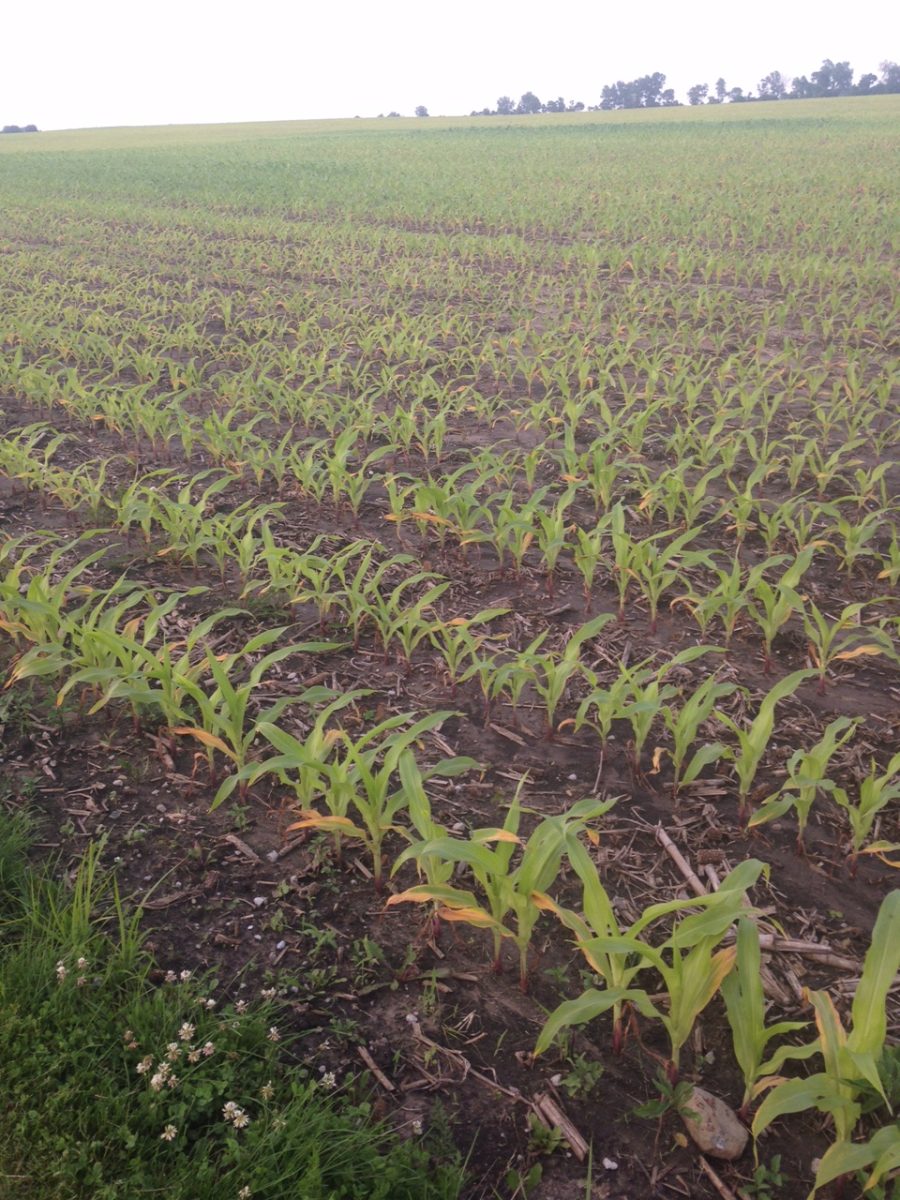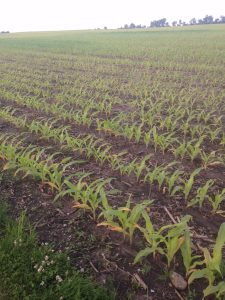Wet June Spells Trouble for Indiana Corn and Soybean Farmers
Country superstar Luke Bryan might disagree, but rain isn’t always a good thing—not when you’ve had 18 inches in one month. Corn farmers in northern Indiana are likely watching the forecast with concern. June of 2015 proved to be a record-setting month when it came to rainfall totals in many areas. Flooding has been a […]

July 6, 2015
Country superstar Luke Bryan might disagree, but rain isn’t always a good thing—not when you’ve had 18 inches in one month. Corn farmers in northern Indiana are likely watching the forecast with concern. June of 2015 proved to be a record-setting month when it came to rainfall totals in many areas. Flooding has been a problem in some locations, and will continue to be an issue if the rain doesn’t let up.
According to the US Department of Agriculture, corn is the most widely produced feed grain in the United States, with the majority of corn being grown in the heartland of America (Iowa, Illinois, and Indiana, as well as parts of South Dakota, Nebraska, Kentucky, Ohio and Missouri). Rainfall during corn’s growing season is vital to its survival, but too much rain can kill the crop. Purdue University reports that central Indiana averages 18.41 inches of rain between May and September, corn’s growing season. During the month of June alone, Jasper County Indiana measured 18.06 inches of rain, nearly the average total for corn’s entire growing season. This spells trouble for the corn crop.
When flooding occurs, the timing of the flood during the plant’s growth cycle will affect how the plant fares. Other factors that contribute to the plant’s survival include the frequency and duration of flooding events, as well as the temperature of both the air and the soil. Studies show that young corn can survive up to four days of ponding if temperatures are cool. If the plant is completely submerged, it is much less likely to survive, as submerged plants are unable to undergo photosynthesis. Corn plants are at a higher risk of death if ponding continues over several days; this is because soil oxygen is depleted within about 48 hours of soil saturation. When oxygen is depleted from the soil, the plant’s critical functions, such as root growth and water uptake, are severely impaired, making it much less likely the plant will survive.
There are other things to consider with flooding aside from worrying about submerged plants. When the water subsides, a hard crust often forms on the dried soil. If flooding occurs shortly after planting, this can make it difficult for seedlings to emerge. Flooding also tends to cake the leaves and stalk of the corn with mud, increasing the likelihood that fungal and bacterial diseases might develop. If the soil continues to remain saturated after the standing water subsides, the plant’s roots could die. New rooting could also be stunted, making it more likely the crop will fail if the later part of the growing season becomes unusually dry.
According to the National Weather Service, June 2015 was the 7th wettest June on record for Indianapolis. Some of the increased rainfall was the result of Tropical Storm Bill, which dumped over a foot of rain in parts of Texas and impacted much of the Midwest. Parts of Southern Indiana saw more than four inches of rain from Tropical Storm Bill, while Northern Indiana was subsequently hit by stormy weather systems kicked up by a fast jet stream.
With June 2015 setting records for rainfall totals in Indiana, what does this mean for farmers? Governor Mike Pence recently met with farmers in Northern Indiana to survey the damage. However, much of the damage caused by the flooding will not show itself until later in the season. The recent flooding is likely to have a profound effect on the 2015 corn yield. With the anticipated decrease in production, corn prices are already on the rise, with corn futures seeing recent gains. Farmers are expecting lower yields, meaning consumers may eventually see higher prices, particularly for beef and gasoline.
What does too much rain mean for corn prices?
Corn is no stranger to fluctuations in the market. In fact, the price of corn is still attempting to rebound from an enormous hit taken in 2013 and 2014 after China rejected US corn imports. The dip in corn prices happened when Swiss-owned Syngenta released a genetically modified corn trait to the market prior to the seed’s approval. When US corn exports were found to be tainted with the unapproved strain, China rejected all US corn, causing an overabundance of corn in the US and a steep fall in prices.
Farmers across the country are filing suit against Syngenta in the hope of recouping losses suffered in 2013 and 2014. Although the price of corn may  rise due to a decrease in production, farmers will have fewer bushels to sell and the increase in price is not guaranteed to make up the difference. Farming is a tricky business when you not only have to contend with the mistakes of seed manufacturers, but also the ever-unpredictable Mother Nature.
rise due to a decrease in production, farmers will have fewer bushels to sell and the increase in price is not guaranteed to make up the difference. Farming is a tricky business when you not only have to contend with the mistakes of seed manufacturers, but also the ever-unpredictable Mother Nature.
Relevant Links
- http://wishtv.com/2015/07/01/pence-surveys-flood-damage-at-2-northern-indiana-farms/
- http://wishtv.com/2015/07/01/state-climate-office-indiana-rains-set-june-record/
- http://wishtv.com/2015/06/29/rains-force-farmers-to-brace-for-economic-disaster/
- https://www.agry.purdue.edu/ext/corn/news/timeless/pondingyoungcorn.html
- http://corn.agronomy.wisc.edu/WCM/W091.aspx
- http://www.ers.usda.gov/topics/crops/.aspx
- https://www.extension.purdue.edu/extmedia/nch/nch-40.html
- http://www.weather.gov/ind/June2015rain
- http://www.weather.com/storms/hurricane/news/tropical-storm-bill-long-time-inland
Available 24/7
Free Case Review
You won’t pay any fees until we win your case.
It’s easy - you can: